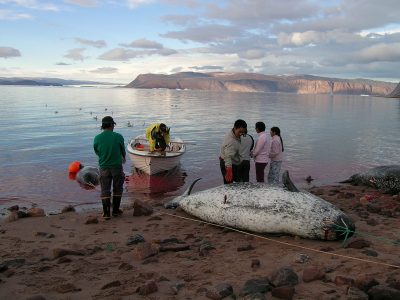Lead image by Vladone / iStock
By Alyssa Tremblay
Photos by Terence Ho
In 2023, for the first time in its history, the Rideau Canal Skateway never opened, as warmer temperatures and higher-than-normal snowfall prevented a thick-enough layer of ice from forming.
This resulted in huge loss of revenue for the city of Ottawa, as tourists hoping to experience the world’s largest skating rink were left disappointed. For many locals with fond memories of brisk winter days spent sipping hot chocolate and looping along the canal, it was a startling example of how climate change can affect even the most seemingly unshakable traditions.
“When we compare to the climate normal over the last 30 years, we had about two thirds more snow than we usually expect to see,” says Shawn Kenny, a professor in the Department of Civil and Environmental Engineering at Carleton University. Managing all that snow coverage on the canal was one of the big issues last year.”
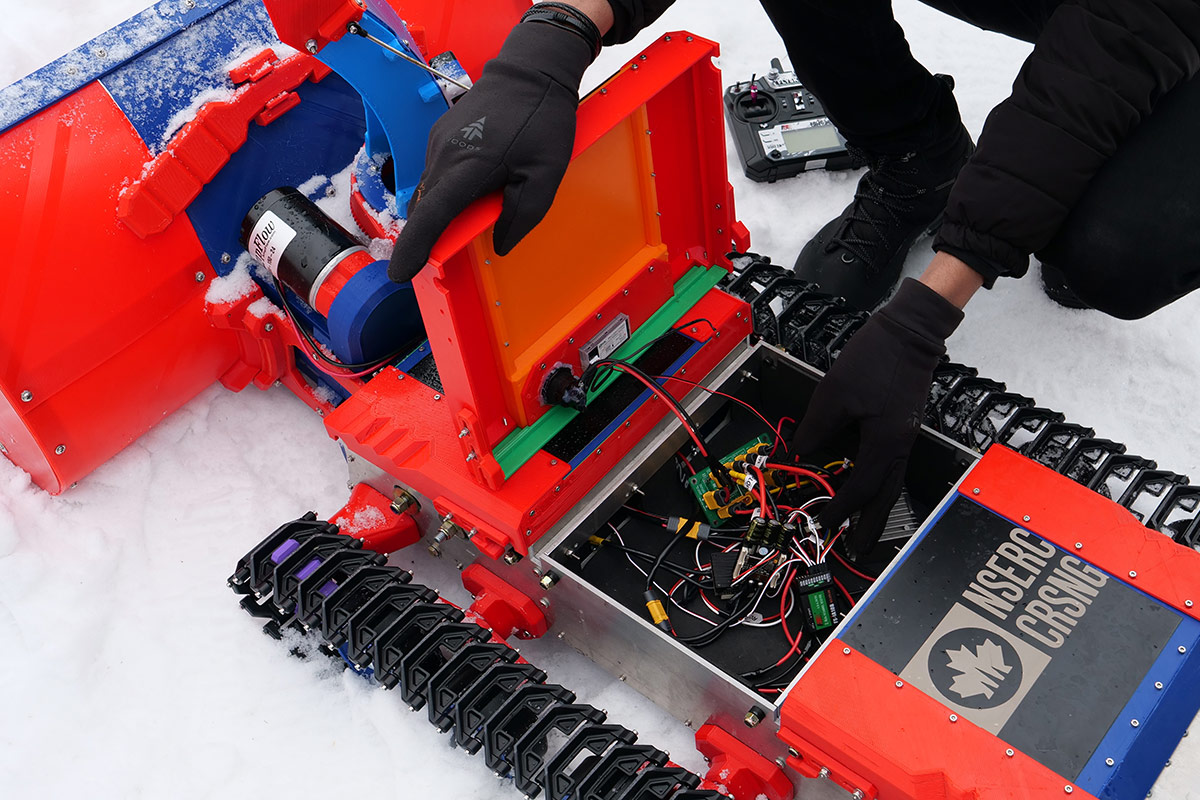
Carleton researchers show off the snow bot’s inner workings
To help ensure that future skating seasons don’t melt away, Kenny is working with a team of Carleton researchers and the National Capital Commission (NCC) on a unique solution: a fleet of snow-clearing robots designed to promote ice growth on the canal. This is one possible adaptation strategy in the toolbox that may address climate change effects and improve the resilience of the skateway.
These “snow bots” will diligently tend to the canal overnight and assess the ice’s condition when it is not accessible by conventional equipment, all to help the NCC get the iconic skateway rink-ready as early in the season as possible.
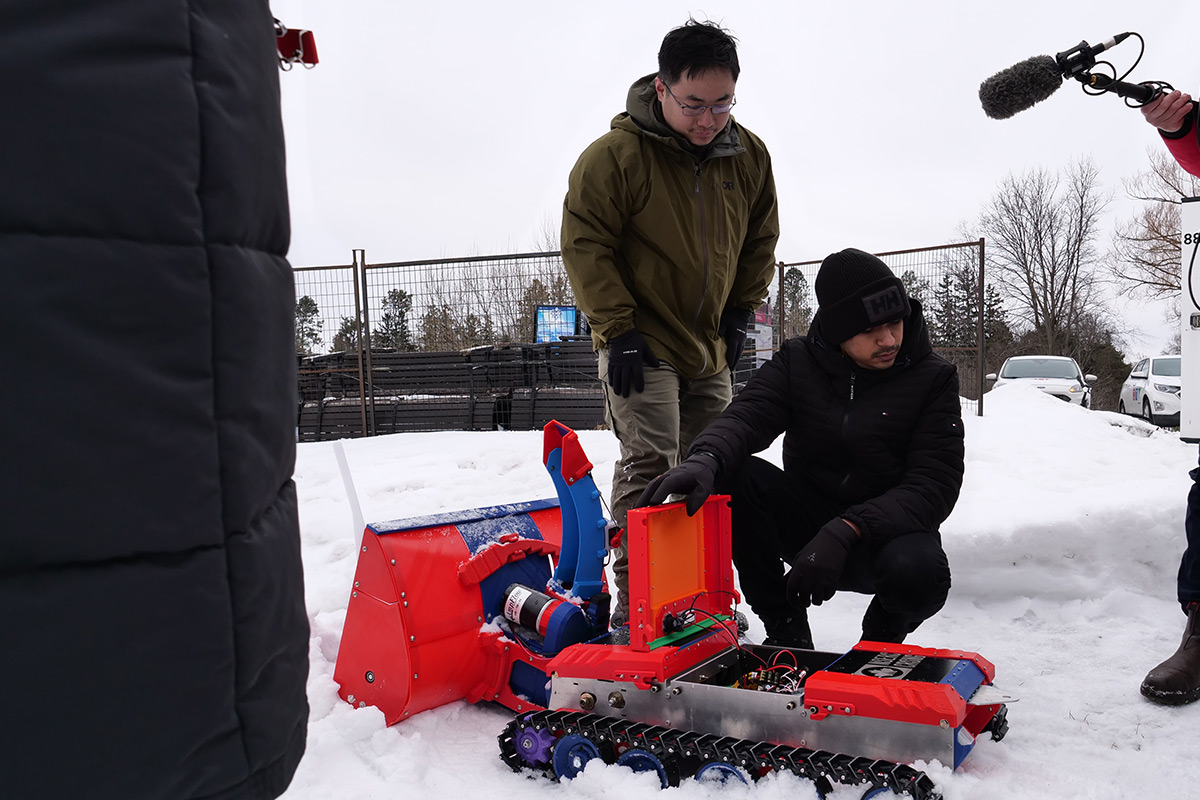
Toy-Like Prototype to Remove Snow and Help Thicken Ice
Weighing in at a sturdy 50 kilograms and made of colourful 3D printed materials, the first snow bot prototype looks like a cross between a remote-controlled toy truck with caterpillar treads and a child-sized snowplow.
The robot’s design draws on the knowledge that high snowfalls are actually detrimental to ice growth. This is because snow is such a good insulator that – ironically, despite its cold consistency – having too much of it layered atop the canal can prevent the surface layer of ice from freezing thick and deep enough to support the weight of skaters.
“Snow really dampens the rate at which ice can grow,” explains Kenny.
“It’s the same principle as when you’re building a backyard rink: you want to compress or remove the snow as much as possible, and then flood the ice. We’re just scaling up that same process to a much larger stretch of ice.”
The project is a collaboration between Kenny and Carleton professors Jeremy Laliberté, Derek Mueller and Murray Richardson, with the robot’s construction itself led by a cross-disciplinary group of Carleton graduate students and a postdoctoral fellow.
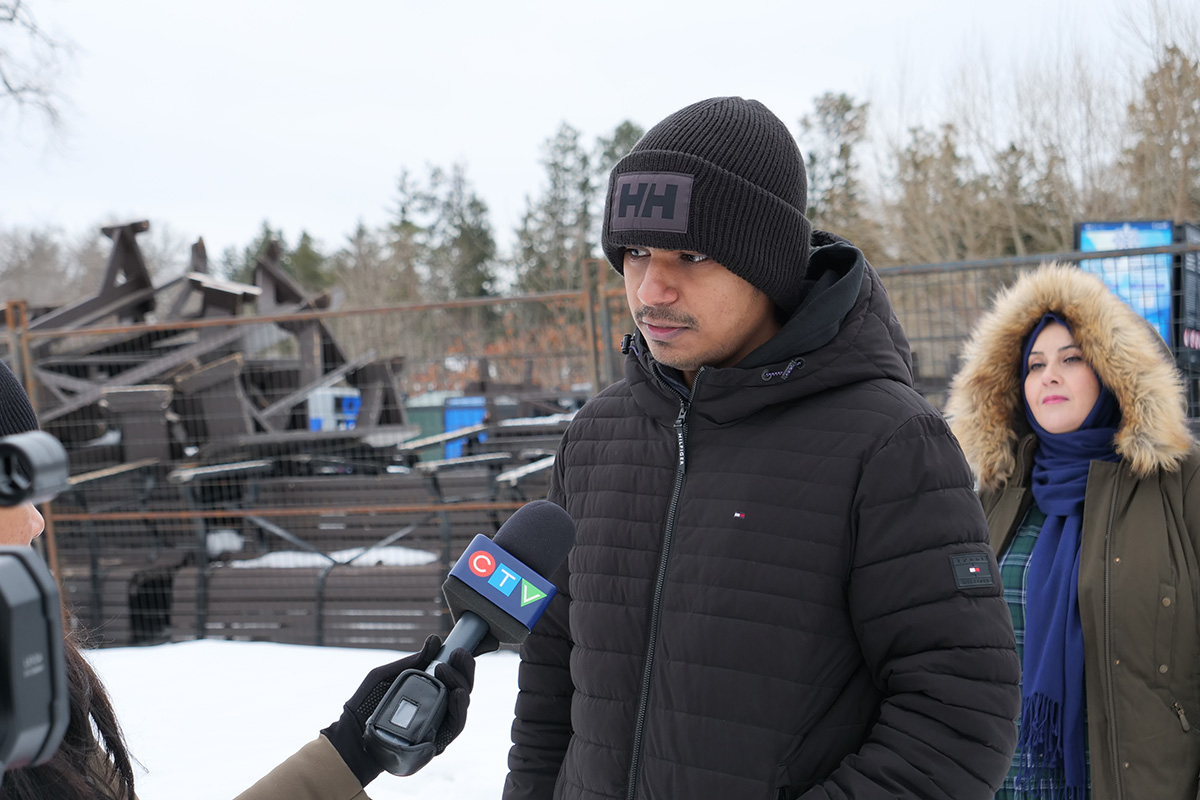
Carleton engineering grad student and snow bot researcher Siri Konakalla speaks to local media
In the Department of Mechanical and Aerospace Engineering, Siri Konakalla works on the robot’s electronics, assembly and maintenance (i.e. the guts), Boyan Zhou handles the 3D printing (i.e. the body) and Hayat El Fazani oversees the team’s work. Meanwhile, civil and environmental engineering post-doc Elham Nakhostin conducts weather monitoring and model building, while PhD student Frederic Brieger from the Department of Geography and Environmental Studies uses drones to map the ice’s surface and measures ice thickness using a sled equipped with ground-penetrating radar.
There are many challenges to designing such a robot – including one you might not expect, but should nonetheless be familiar to anyone who’s spent a few frostbitten hours skating along the canal.
“It needs to be waterproof and stay warm on the ice,” says Konakalla, explaining that the team is working hard to insulate the snow bot’s internal batteries and electrical parts against January and February’s sub-zero temperatures.
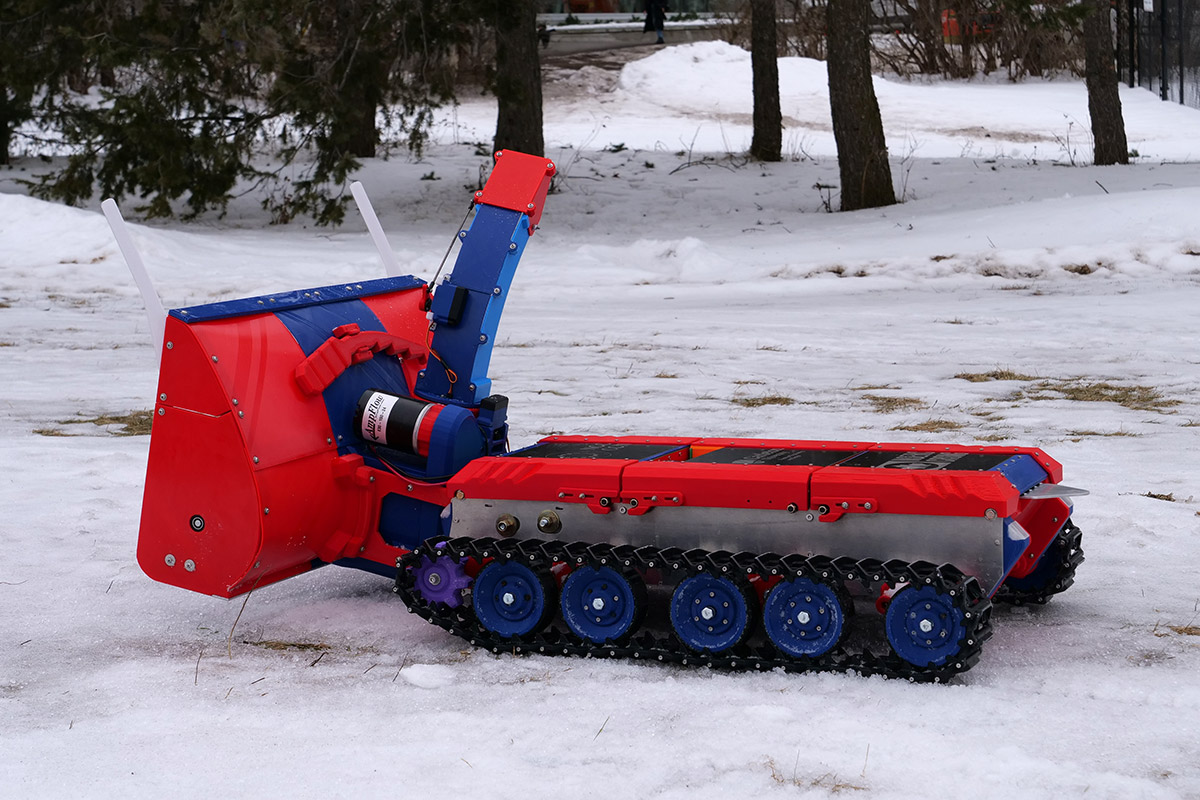
NCC-Carleton Partnership to Help Canada’s Capital City Adapt to Climate Change
The snow bot is just one project in a four-year research partnership between Carleton University and the NCC to collect data on the Rideau Canal and find new creative solutions to encourage ice growth as rising global temperatures lead to milder and wetter Ottawa winters.
“Our partnership with Carleton University is helping us identify innovative strategies to adapt Skateway operations to the impacts of climate change,” says NCC spokesperson Benoît Desjardins.
“The snow bot will be able to reach areas where the ice is thinner and heavy machinery is unable to reach. The intention is to help with starting our ice thickening efforts earlier in the season.”
While it’ll be at least another year before the robo-fleet is released onto the ice, you might be able to catch sight of a prototype rolling atop Dow’s Lake this January and February as the Carleton team begins their first batch of trial runs.
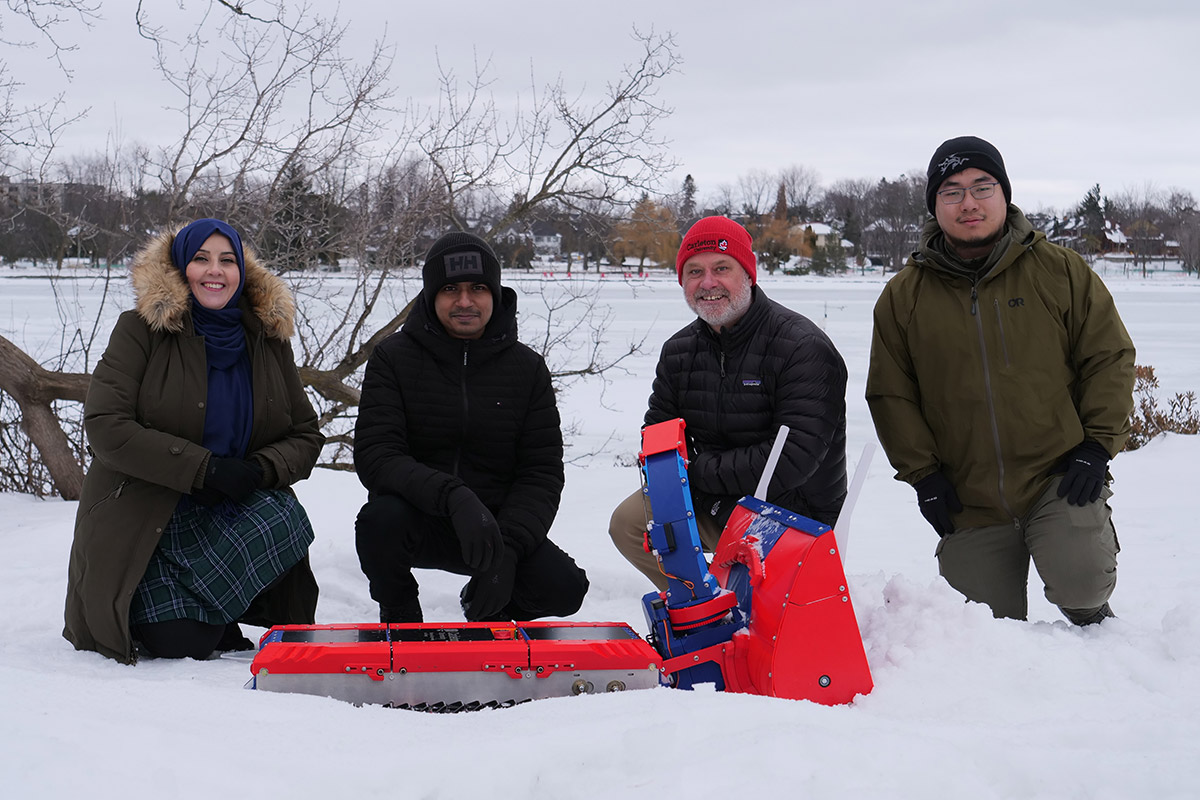
Snow bot team members (from left to right): Hayat El Fazani, Siri Konakalla, Shawn Kenny and Boyan Zhou
Through these tests, researchers will gather important data on how the robot performs on the canal in different environmental and weather conditions, and how efficiently and quickly a single machine can clear snow from the ice.
The results could lead to design changes and even new accessories. In fact, the team is already considering complementing the robot’s snow-cutting blades with a brush mechanism to help clear lighter snowfall. There’s also talk of hitching a carriage to the back of the snow bot that could drill down and flood the ice behind it, effectively resurfacing the canal with water like a Zamboni in a hockey rink.
Currently, NCC staff do much of this labour by hand. The goal is to help automate and amplify these existing processes that have worked to maintain the canal for decades.
“The NCC has built up an expertise since 1971 around how to manage a canal and a skateway,” says Kenny.
“We’re just hoping to enhance those techniques and provide them with options, so they have a pathway for dealing with climate change in the future.”
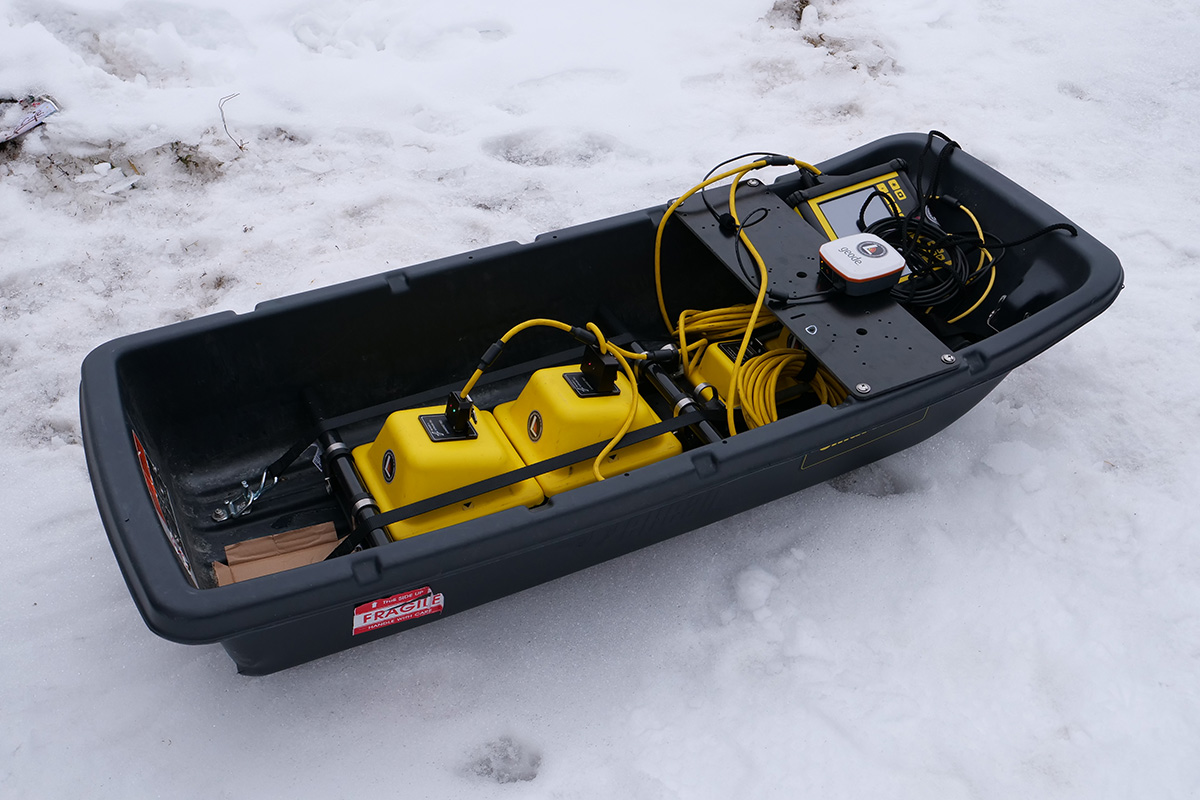
Monday, January 29, 2024 in Civil and Environmental Engineering, Innovation, Research
Share: Twitter, Facebook

